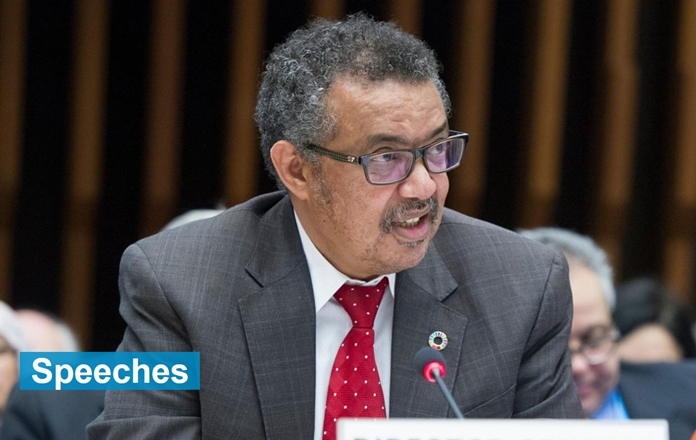
30 March 2020
Good morning, good afternoon and good evening, wherever you are.
The COVID-19 pandemic is straining health systems in many countries.
The rapidly increasing demand on health facilities and health workers threatens to leave some health systems overstretched and unable to operate effectively.
Previous outbreaks have demonstrated that when health systems are overwhelmed, deaths due to vaccine-preventable and treatable conditions increase dramatically.
Even though we’re in the midst of a crisis, essential health services must continue. Babies are still being born, vaccines must still be delivered, and people still need life-saving treatment for a range of other diseases.
WHO has published guidelines to help countries balance the demands of responding directly to COVID-19, while maintaining essential health services.
This includes a set of targeted, immediate actions to reorganize and maintain access to high-quality essential health services, including routine vaccination; care during pregnancy and childbirth; treatment for infectious and noncommunicable diseases and mental health conditions; blood services, and more.
That includes ensuring an adequate health workforce to deal with the many health needs other than COVID-19.
For example, we’re pleased by the 20 000 health workers in the UK who have offered to return to work, and that other countries such as the Russian Federation are involving medical students and trainees in the response.
To help countries manage the surge in COVID-19 cases while maintaining essential services, WHO has also published a detailed, practical manual on how to set up and manage treatment centres for COVID-19.
The manual covers three major interventions:
First, how to set up screening and triage at health facilities, using a repurposed building or a tent.
Second, how to set up community facilities to care for mild patients;
And third, how to set up a treatment center, by repurposing hospital wards or entire hospitals, or by setting up a new hospital in a tent.
The manual covers structural design, infection prevention and control measures, and ventilation systems.
This is a life-saving instruction manual to deal with the surge of cases that some countries are facing right now.
These facilities will also have longer-term benefits for health systems once the current crisis is over.
In addition to having facilities for patients, it’s also vital that countries have sufficient supplies of diagnostics, protective equipment and other medical supplies.
Ensuring free movement of essential health products is vital for saving lives and curbing the social and economic impacts of the pandemic.
Earlier today I spoke to trade ministers from the G20 countries about ways to address the chronic shortage of personal protective equipment and other essential medical supplies.
We call on countries to work with companies to increase production; to ensure the free movement of essential health products; and to ensure equitable distribution of those products, based on need.
Specific attention should be given to low- and middle-income countries in Africa, Asia and Latin America.
In addition, WHO is working intensively with several partners to massively increase access to life-saving products, including diagnostics, PPE, medical oxygen, ventilators and more.
We understand that many countries are implementing measures that restrict the movement of people.
In implementing these measures, it’s vital to respect the dignity and welfare of all people.
It’s also important that governments keep their people informed about the intended duration of measures, and to provide support for older people, refugees, and other vulnerable groups.
Governments need to ensure the welfare of people who have lost their income and are in desperate need of food, sanitation and other essential services.
Countries should work hand-in-hand with communities to build trust and support resilience and mental health.
===
Two months ago, WHO published the Strategic Preparedness and Response Plan, with an initial ask of 675 million US dollars to support countries to prepare for and respond to COVID-19.
We’re very grateful to the many countries and foundations who have contributed; more than 622 million dollars have been received so far, and we would like to thank the King Salman Center for Humanitarian Relief for its contribution of 10 million US dollars.
We continue to be encouraged by the signs of global solidarity to confront and overcome this common threat.
The commitment of G20 countries to work together to improve the production and equitable supply of essential products shows that the world is coming together.
Yesterday I sent a tweet with a single word: humility. Some people asked me why.
COVID-19 is reminding us how vulnerable we are, how connected we are and how dependent we are on each other.
In the eye of a storm like COVID, scientific and public health tools are essential, but so are humility and kindness.
With solidarity, humility and assuming the best of each other, we can – and will – overcome this together.
I thank you.
 |
 |
 |





